Background
Matt Hanson is a filmmaker who created the onedotzero digital film festival & organisation, and is the author of a series of books on digital film, including The End of Celluloid: Film Futures in the Digital Age.
He has made a multitude of successful and innovative short films (including the award-winning Salaryman 6, with Jake Knight, and City of Hollow Mountains with The Light Surgeons), television series for Channel 4 (UK), and is considered an expert in moving image trends.
As an advocate of digital film and alternative moving image in the 1990s he championed and showcased UK premieres of work by then relative unknowns Spike Jonze, Chris Cunningham, Michel Gondry and Jonathan Glazer.
Wikinews has related news:
He is the originator of the Creative Commons-licensed film project A Swarm of Angels.
A Screen International article cited him as an 'international film visionary'. Forbes listed him among 'Ten People Who Could Change The World' in 2007.
He was chosen as a participant in the inaugural Creators Series 2007, a showcase of emerging creativity and ideas in New York and Los Angeles by Tomorrow Unlimited.
Creative Commons (CC) is an American non-profit organization and international network devoted to educational access and expanding the range of creative works available for others to build upon legally and to share. The organization has released several copyright licenses, known as Creative Commons licenses, free of charge to the public. These licenses allow authors of creative works to communicate which rights they reserve and which rights they waive for the benefit of recipients or other creators. An easy-to-understand one-page explanation of rights, with associated visual symbols, explains the specifics of each Creative Commons license. Content owners still maintain their copyright, but Creative Commons licenses give standard releases that replace the individual negotiations for specific rights between copyright owner (licensor) and licensee, that are necessary under an "all rights reserved" copyright management.
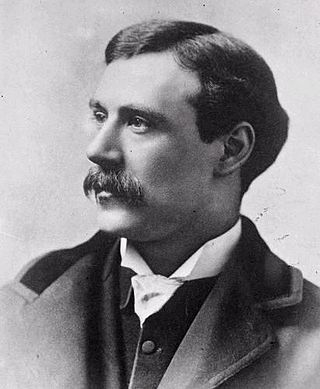
William Friese-Greene was a prolific English inventor and professional photographer. He was known as a pioneer in the field of motion pictures, having devised a series of cameras between 1888–1891 and shot moving pictures with them in London. He went on to patent an early two-colour filming process in 1905. Wealth came with inventions in printing, including phototypesetting and a method of printing without ink, and from a chain of photographic studios. However, Friese-Greene spent all his money on inventing, went bankrupt three times, was jailed once, and died in poverty.
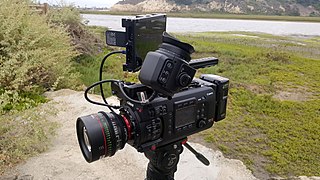
A movie camera is a type of photographic camera that rapidly takes a sequence of photographs, either onto film stock or an image sensor, in order to produce a moving image to display on a screen. In contrast to the still camera, which captures a single image at a time, the movie camera takes a series of images by way of an intermittent mechanism or by electronic means; each image is a frame of film or video. The frames are projected through a movie projector or a video projector at a specific frame rate to show the moving picture. When projected at a high enough frame rate, the persistence of vision allows the eyes and brain of the viewer to merge the separate frames into a continuous moving picture.
Visual effects is the process by which imagery is created or manipulated outside the context of a live-action shot in filmmaking and video production. The integration of live-action footage and other live-action footage or CGI elements to create realistic imagery is called VFX.

Grant Robert Gee is a British film maker, photographer and cinematographer. He is most noted for his 1998 documentary Meeting People Is Easy about the British alternative rock group Radiohead.
onedotzero is a contemporary digital arts organisation based in London that aims to promote new work in moving image and motion arts. The organisation conducts public events, artist and content development, publishing projects, education, production, creative direction, and related visual art consultancy services.
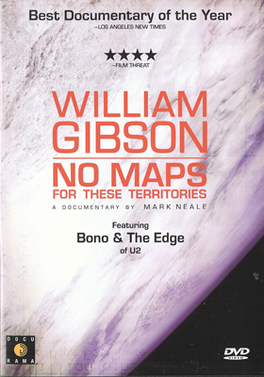
No Maps for These Territories is an independent documentary film made by Mark Neale focusing on the speculative fiction author William Gibson. It features appearances by Jack Womack, Bruce Sterling, Bono, and The Edge and was released by Docurama. The film had its world premiere at the Vancouver International Film Festival in October 2000.
Digital film festivals are a type of film festival that emerged in the mid-to-late 1990s. They specifically showcase artists and filmmakers who utilize the tools of desktop digital filmmaking, as opposed to the analog filmmaking techniques that had previously dominated the industry.
Owen Paterson is an Australian production designer, who was chiefly responsible for the design and look of The Matrix series of movies. He grew up in Western Australia, and now resides in Sydney. Following The Matrix, his collaboration with Lana and Lilly Wachowski continued with the films V for Vendetta and Speed Racer.
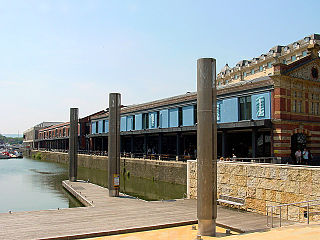
Watershed opened in June 1982 as the United Kingdom's first dedicated media centre. Based in former warehouses on the harbourside at Bristol, it hosts three cinemas, a café/bar, events/conferencing spaces, the Pervasive Media Studio, and office spaces for administrative and creative staff. It occupies the former E and W sheds on Canon's Road at Saint Augustine's Reach, and underwent a major refurbishment in 2005. The building also hosts UWE eMedia Business Enterprises, Most of Watershed's facilities are situated on the second floor of two of the transit sheds. The conference spaces and cinemas are used by many public and private sector organisations and charities. Watershed employs the equivalent of over seventy full-time staff and has an annual turnover of approximately £3.8 million. As well as its own commercial income, Watershed Arts Trust is funded by national and regional arts funders.
A Swarm of Angels (ASOA) was an open source film project and participatory film community, whose aim was to make the world's first Internet-funded, crewed and distributed feature film. The collaborative project aimed to attract 50,000 individual subscribers (the "Swarm of Angels"), each contributing £25 to the production, but after three years only 1,000 subscriptions were made. This feature film and associated original media project embraces the Creative Commons notion of flexible copyright licensing, to permit people to freely download, share, and remix the original media made for the project.
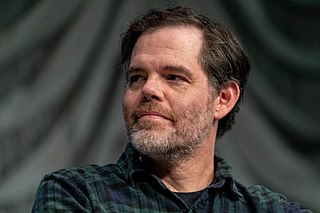
Lance Weiler is an American filmmaker and writer from Pennsylvania, and the Director of the Digital Storytelling Lab at Columbia University School of the Arts. He first was known for The Last Broadcast (1997), a found footage horror film which he co-wrote, co-produced, co-directed, and co-starred in with Stefan Avalos. The Last Broadcast made cinematic history on October 23, 1998 as the first all-digital release of motion picture to be stored and forwarded via geosynchronous satellite. Initially working as an assistant cameraman and camera operator on large commercial shoots, in Pennsylvania and later New York City, Weiler is known for increasing work in experimental combinations of film, AI, gaming, and related media.
An orphan film photos is a motion picture work that has been abandoned by its owner or copyright holder. The term can also sometimes refer to any film that has suffered neglect.
Motion Blur: Graphic Moving Image Makers is a book released by onedotzero in 2004. Produced by Shane Walter and Matt Hanson, it features a number of articles about, and interviews with, 28 multimedia artists and graphic houses. It also includes a DVD featuring a number of videos created by the aforementioned artists. The first edition of the book and DVD were housed in a foam cover, with the phrase onedotzero cut through the foam in a stencil fashion; the reprint does not include this cover.

A film – also called a movie, motion picture, moving picture, picture, photoplay or (slang) flick – is a work of visual art that simulates experiences and otherwise communicates ideas, stories, perceptions, feelings, beauty, or atmosphere through the use of moving images. These images are generally accompanied by sound and, more rarely, other sensory stimulations. The word "cinema", short for cinematography, is often used to refer to filmmaking and the film industry, and the art form that is the result of it.
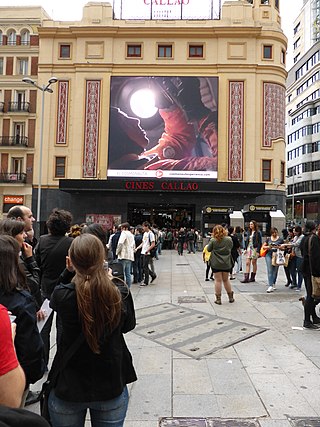
The Cosmonaut is a Spanish science-fiction film, directed by Nicolás Alcalá and produced by Carola Rodríguez and Bruno Teixidor. It premiered in May 2013. The first feature-length project of Riot Cinema Collective is notable for its use of crowdfunding and Creative Commons license in its production.

The Free Culture Forum (FCForum) was an international meeting of relevant organisations and individuals involved in free culture, digital rights and access to knowledge. It took place in Barcelona every annually from 2009 to 2015, jointly with the oXcars, a free culture festival. The oXcars are a non-competitive awards ceremony held at Sala Apolo in Barcelona, Spain, in October each year. They are a public showcase that puts the spotlight on cultural creation and distribution carried out under the paradigms of shared culture. Through presentations and symbolic mentions of works in a series of categories, real legal situations involving free culture are shown using parody.
Simon Pummell is a British filmmaker currently based in Amsterdam in The Netherlands, best known for directing Bodysong (2003) a documentary feature film that portrays the human life-cycle through archive footage from across a century of moving image creation.
Alchemy Film and Moving Image Festival is an annual film festival and the flagship event of Alchemy Film & Arts that takes place each year in the Scottish Borders town of Hawick. Founded in 2010, it has grown to be considered as one of the key fixtures of experimental and artist film within the UK and Europe.









